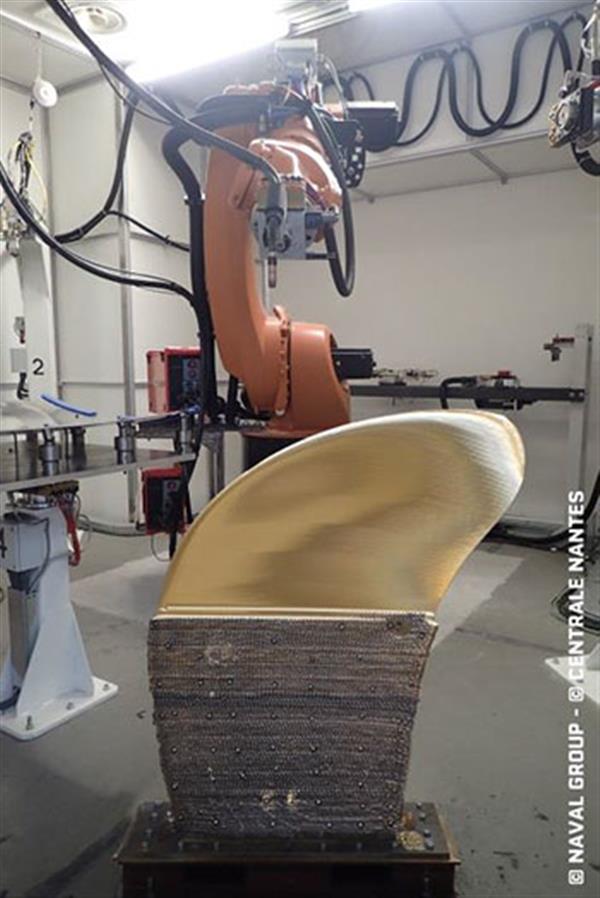As part of a joint laboratory of Marine Technology, Naval Group and Centrale Nantes additively manufactured a propeller blade of more than 300 kg. It was a true challenge to master the production process for large parts. Successful challenge since it led to the manufacturing of such a complex propeller.
Further information has not been given on the manufacturing process. However, we do know that the propeller provides a certain robustness to ships through its performance (autonomy and propulsion), stealth and lightening.

Vincent Geiger, Director of Naval Group’s Naval Research Technology Research Center, laid emphasis on the importance of these results:
“Printing this demonstrator is a major step towards the manufacture of innovative propellers by additive manufacturing. These initial results mean that it’s possible to envisage the short-term commissioning of differentiated propellers for the ships that will use them.”
Professor Jean-Yves Hascoët, expert in 3D printing and Head of the Rapid Manufacturing Platform at Centrale Nantes, recalled the advantages of additive manufacturing in the production of complex parts: less material used, lower costs, integration of additional features and geometrically-complex parts assembly.
Nantes is establishing its marks in 3D printing
Since the beginning of the year, this is the second major innovation Nantes achieved using 3D printing, the first one being YHNOVA, the 3D printed house with 5 rooms inaugurated in March 2018.
The city is increasingly fostering the adoption of 3D printing in a wide range of areas and to a certain extent the growing place of robotization in tomorrow’s careers.
For further information about 3D Printing, follow us on our social networks and subscribe to our newsletter! Would you like to subscribe to 3D Adept Mag? Would you like to be featured in the next issue of our digital magazine? Send us an email at contact@3dadept.com






